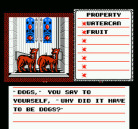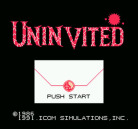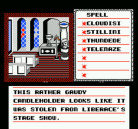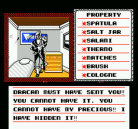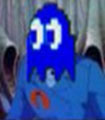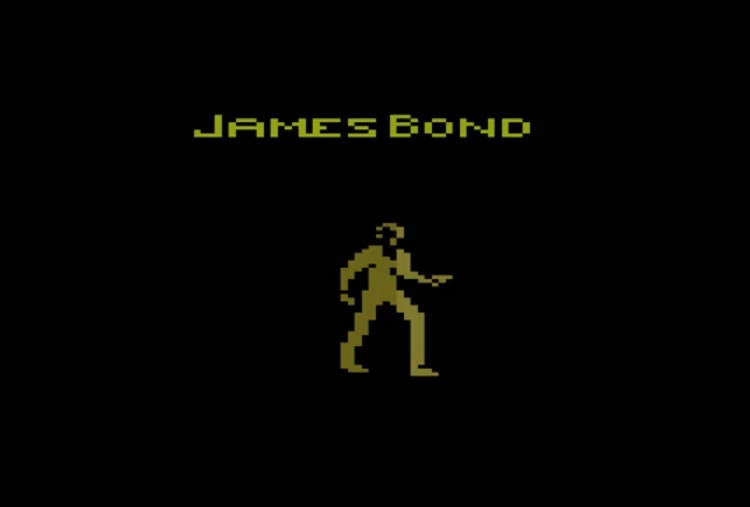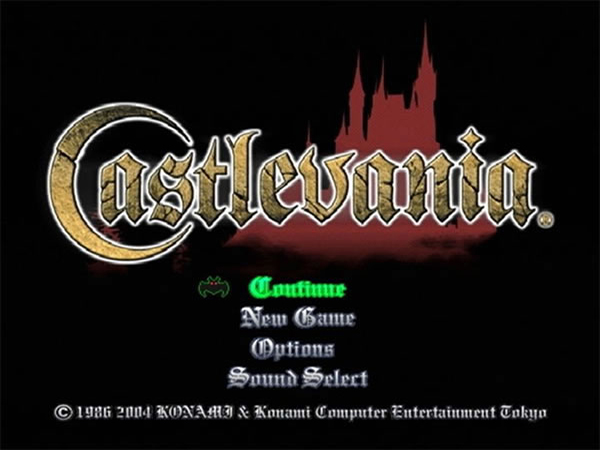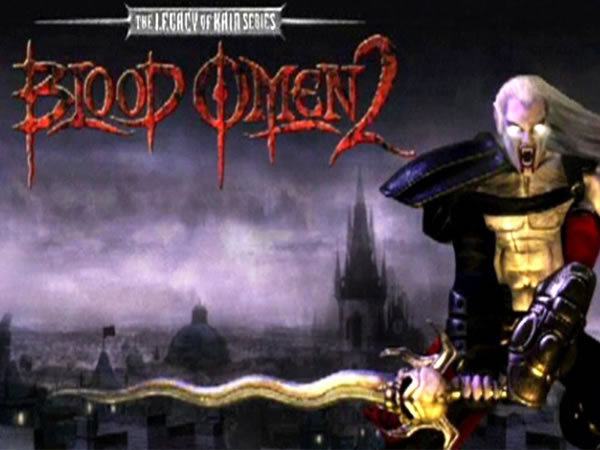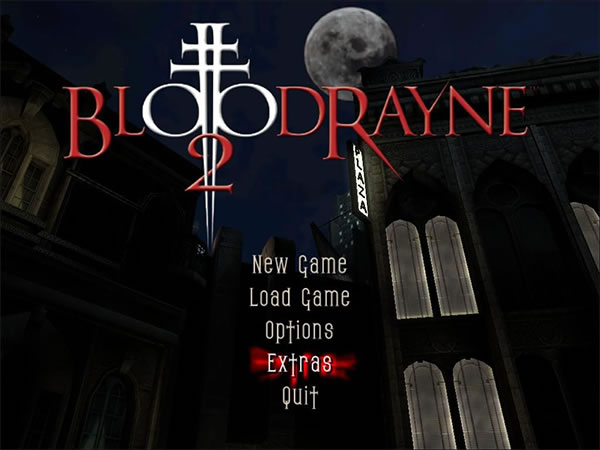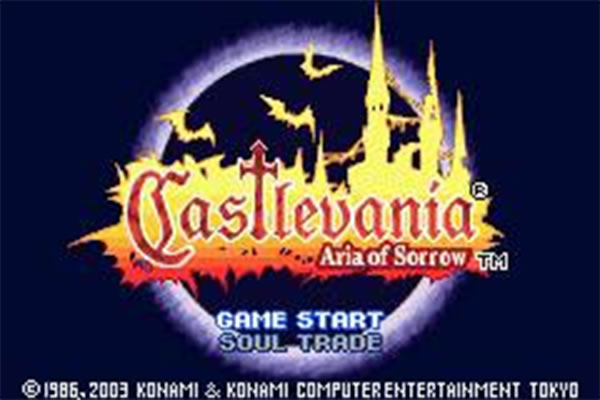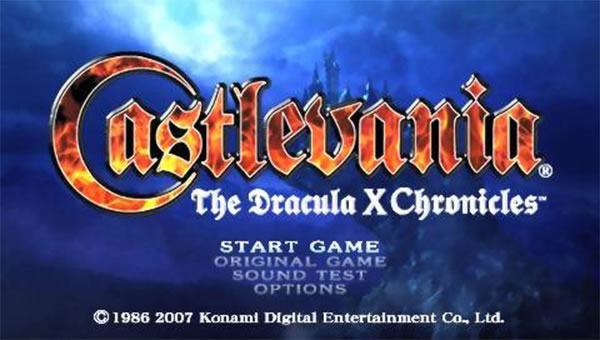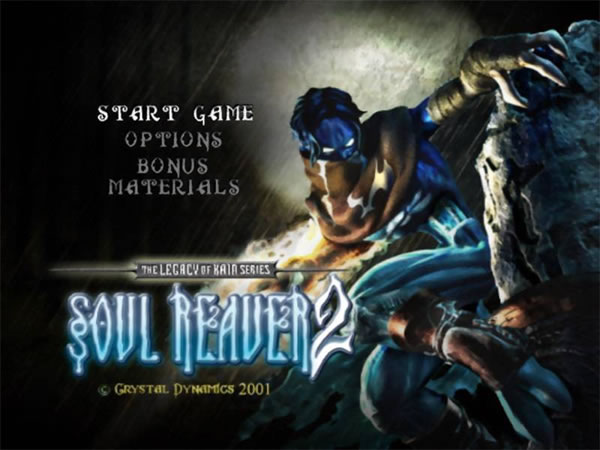- CLASSIC MAGAZINES
- REVIEW CREW
A show recapping what critics thought back
when classic games first came out! - NEXT GENERATION'S BEST & WORST
From the worst 1-star reviews to the best
5-stars can offer, this is Next Generation! - NINTENDO POWER (ARCHIVE)
Experience a variety of shows looking at the
often baffling history of Nintendo Power! - MAGAZINE RETROSPECTIVE
We're looking at the absolutely true history of
some of the most iconic game magazines ever! - SUPER PLAY'S TOP 600
The longest and most ambitious Super NES
countdown on the internet! - THEY SAID WHAT?
Debunking predictions and gossip found
in classic video game magazines! - NEXT GENERATION UNCOVERED
Cyril is back in this spin-off series, featuring the
cover critic review the art of Next Generation! - HARDCORE GAMER MAGAZING (PDF ISSUES)
Download all 36 issues of Hardcore Gamer
Magazine and relive the fun in PDF form!
- REVIEW CREW
- ELECTRONIC GAMING MONTHLY
- ELECTRONIC GAMING MONTHLY RANKS
From Mario to Sonic to Street Fighter, EGM
ranks classic game franchises and consoles! - ELECTRONIC GAMING MONTHLY BEST & WORST
Counting down EGM’s best and worst reviews
going year by year, from 1989 – 2009! - ELECTRONIC GAMING BEST & WORST AWARDS
11-part video series chronicling the ups and
downs of EGM’s Best & Worst Awards!
- ELECTRONIC GAMING MONTHLY RANKS
- GAME HISTORY
- GAME OVER: STORY BREAKDOWNS
Long-running series breaking down game
stories and analyzing their endings! - A BRIEF HISTORY OF GAMING w/ [NAME HERE]
Real history presented in a fun and pithy
format from a variety of game historians! - THE BLACK SHEEP
A series looking back at the black sheep
entries in popular game franchises! - INSTANT EXPERT
Everything you could possibly want to know
about a wide variety of gaming topics! - FREEZE FRAME
When something familiar happens in the games
industry, we're there to take a picture! - I'VE GOT YOUR NUMBER
Learn real video game history through a series
of number-themed episodes, starting at zero! - GREAT MOMENTS IN BAD ACTING
A joyous celebration of some of gaming's
absolute worst voice acting!
- GAME OVER: STORY BREAKDOWNS
- POPULAR SHOWS
- DG NEWS w/ LORNE RISELEY
Newsman Lorne Riseley hosts a regular
series looking at the hottest gaming news! - REVIEW REWIND
Cyril replays a game he reviewed 10+ years
ago to see if he got it right or wrong! - ON-RUNNING FEUDS
Defunct Games' longest-running show, with
editorials, observations and other fun oddities! - DEFUNCT GAMES QUIZ (ARCHIVE)
From online quizzes to game shows, we're
putting your video game knowledge to the test!- QUIZ: ONLINE PASS
Take a weekly quiz to see how well you know
the news and current gaming events! - QUIZ: KNOW THE GAME
One-on-one quiz show where contestants
find out if they actually know classic games! - QUIZ: THE LEADERBOARD
Can you guess the game based on the classic
review? Find out with The Leaderboard!
- QUIZ: ONLINE PASS
- DEFUNCT GAMES VS.
Cyril and the Defunct Games staff isn't afraid
to choose their favorite games and more! - CYRIL READS WORLDS OF POWER
Defunct Games recreates classic game
novelizations through the audio book format!
- DG NEWS w/ LORNE RISELEY
- COMEDY
- GAME EXPECTANCY
How long will your favorite hero live? We crunch
the numbers in this series about dying! - VIDEO GAME ADVICE
Famous game characters answer real personal
advice questions with a humorous slant! - FAKE GAMES: GUERILLA SCRAPBOOK
A long-running series about fake games and
the people who love them (covers included)! - WORST GAME EVER
A contest that attempts to create the worst
video game ever made, complete with covers! - LEVEL 1 STORIES
Literature based on the first stages of some
of your favorite classic video games! - THE COVER CRITIC
One of Defunct Games' earliest shows, Cover
Critic digs up some of the worst box art ever! - COMMERCIAL BREAK
Take a trip through some of the best and
worst video game advertisements of all time! - COMIC BOOK MODS
You've never seen comics like this before.
A curious mix of rewritten video game comics!
- GAME EXPECTANCY
- SERIES ARCHIVE
- NINTENDO SWITCH ONLINE ARCHIVE
A regularly-updated list of every Nintendo
Switch Online release, plus links to review! - PLAYSTATION PLUS CLASSIC ARCHIVE
A comprehensive list of every PlayStation
Plus classic release, including links! - RETRO-BIT PUBLISHING ARCHIVE
A regularly-updated list of every Retro-Bit
game released! - REVIEW MARATHONS w/ ADAM WALLACE
Join critic Adam Wallace as he takes us on a
classic review marathon with different themes!- DEFUNCT GAMES GOLF CLUB
Adam Wallace takes to the links to slice his way
through 72 classic golf game reviews! - 007 IN PIXELS
Adam Wallace takes on the world's greatest spy
as he reviews 15 weeks of James Bond games! - A SALUTE TO VAMPIRES
Adam Wallace is sinking his teeth into a series
covering Castlevania, BloodRayne and more! - CAPCOM'S CURSE
Adam Wallace is celebrating 13 days of Halloween
with a line-up of Capcom's scariest games! - THE FALL OF SUPERMAN
Adam Wallace is a man of steel for playing
some of the absolute worst Superman games! - THE 31 GAMES OF HALLOWEEN
Adam Wallace spends every day of October afraid
as he reviews some of the scariest games ever! - 12 WEEKS OF STAR TREK
Adam Wallace boldly goes where no critic has
gone before in this Star Trek marathon!
- DEFUNCT GAMES GOLF CLUB
- DAYS OF CHRISTMAS (ARCHIVE)
Annual holiday series with themed-episodes
that date all the way back to 2001!- 2015: 30 Ridiculous Retro Rumors
- 2014: 29 Magazines of Christmas
- 2013: 29 Questionable Power-Ups of Christmas
- 2012: 34 Theme Songs of Christmas
- 2011: 32 Game Endings of Christmas
- 2010: 31 Bonus Levels of Christmas
- 2009: 30 Genres of Christmas
- 2008: 29 Controls of Christmas
- 2007: 34 Cliches of Christmas
- 2006: 33 Consoles of Christmas
- 2005: 32 Articles of Christmas
- 2004: 31 Websites of Christmas
- 2003: 29 Issues of Christmas
- 2002: 28 Years of Christmas
- 2001: 33 Days of Christmas
- NINTENDO SWITCH ONLINE ARCHIVE
- REVIEW ARCHIVE
- FULL ARCHIVE
Uninvited
After avoiding a shadowy figure standing in the middle of the road, you wake
up in your freshly crashed car, discover a loved one is missing, and then head
off in search of your former passenger. Anyone who has played the original
Silent Hill would recognize the premise, but this was first the back-story of
a different horror game called Uninvited, a point-and-click adventure that
surprised and scared PC gamers in the mid-eighties. The port for the NES also
offers a few good hair-raising thrills for a new demographic of gamers, even
if some of the frights had to be toned down a bit to fit the stricter family-
friendly criteria established by the blue-nosed Nintendo of America
corporation.
When you enter the nearest house in search of your sister (changed from being your brother in the original game), you discover that your wrecked car is the least of your problems. The house is crawling with hostile specters, zombies, and other nasties who will devour you with any false move. It's a good thing you have three save slots to help you learn from your mistakes, and you will make plenty before you know the full truth behind the evil mastermind, Dracan, who has turned this quaint country home into a potential sepulcher for you and your sister.
Both the interface and story are very similar to Shadowgate, released for the NES a year earlier. You use the controller like a computer mouse to unravel the story of a sorcerer's apprentice who grew too powerful, usurped his master, and created a dark world fashioned after his own broken psyche. It has all the hallmarks of the MacVenture games that Kemco brought to the NES in collaboration with ICOM Simulations: wit, puzzle solving, gloomy atmospheres, and good fun.
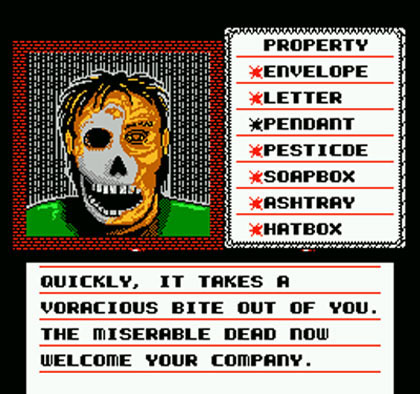
Part of the joy of playing Uninvited is that you can detect a real human intelligence behind it, a sense-of-humor that requires a bit of cultural literacy on part of the player. Many of the riffs of the original game are gone, but there are still plenty of allusions as well as direct references to films and books, including The Hobbit, Gone with the Wind, A Christmas Carol, Indiana Jones, and Macbeth, just to name a few. In typically large Nintendo typeface, the text is considerably shortened from the PC game (of course, we all know that computer users of this time were more scholarly than those button mashers who bought consoles). But like an Ernest Hemingway short story that purposely omits large chunks of information from a first draft, the adjusted descriptions and internal monologues still carry the essence of the writers' voice-with sarcasm intact.
One thing that sets Uninvited apart from other adventure games is the insane number of items you have available to you. Adventure programmers can be stingy when it comes to collectable items. Any fan of the point-and-click genre knows that excitement of finding a previously unseen object that will undoubtedly save the day. It doesn't matter how seemingly useless a piece of pixilated bric-a-brac is; you will be glad to have that wad of gum because it can mean the difference between escaping a jail cell or languishing in solitary. Uninvited takes a totally different approach. Of the over 65 collectable items, only 32 will prove useful. Put simply, more than half of your inventory is worthless. The trick is sorting through it all. Thankfully, the NES port allows you to carry everything. The original game tried to be more realistic by not allowing players more than 15 items, a feature that when combined with a time limit, caused many players to suffer defeat as they backtracked across the mansion grounds littered with previously dropped items to find the one they need.
For some reason, the MacVenture writers felt a need to lace all their adventures with an impending sense of doom from some random variable. In the case of Deja Vu, it was a maniac mugger who stalks you relentlessly, making each of your moves in the streets a tentative one. Here, in Uninvited, they introduce a similar element in the form of a red skull who wedges his way into your consciousness, threatening your sanity and individual will (as if being attacked from outside forces isn't enough). The presence is meant to unnerve you, but after a while, it just serves as a nuisance that slows down the flow of the game. Thankfully, your mind resets to full sanity whenever you continue, a luxury that PC players did not have. In this regard, the NES version is lot more enjoyable knowing that you don't have to be too efficient in solving the puzzles and sorting through the myriad of objects you tote with you.
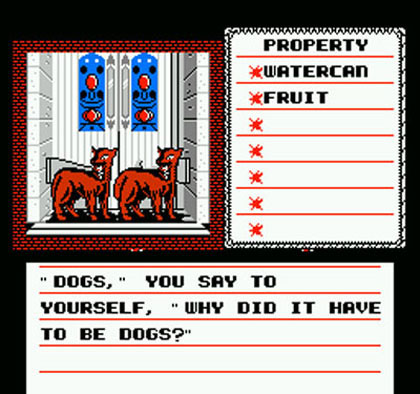
Since the NES has no keyboard, spells are uttered using a menu dropdown box, and their names connote their purpose more easily. Originally, the spells were a combination of Old English, faux Latin, and Gnostic-based words ("Specan heafod abraxas"). Now, it is a simple matter of choosing a single word like "Thundede" to call forth a storm or "Cloudisi" to make yourself invisible.
At points, it is a good thing that the NES Uninvited is dumbed down. The puzzles are lot less mind-bending and cryptic and Kemco smartly inserted in- game clues. For example, you would have to be either just plain lucky or a genius to know to put a cookie down on the floor in the rec room in the original rendition. In the more user-friendly NES game, an empty plate is placed on the floor inviting you to put something on it. It's a small detail, but it makes a big difference in one's ability to finish the adventure without consulting a walkthrough (and walkthroughs make one feel a sense of shame and weakness and should be avoided at all costs).
So, in making Uninvited more accessible to players, Kemco improves on an already good product. One of the few drawbacks for those who love the original is the insertion of music. It may be sacrilege to gripe about the music that many sentimentalists have a soft spot for, but if you have played the Amiga, Windows, Atari ST, or DOS versions, filled with anticipatory silence occasionally broken by a thunderclap or a scream, you may find the incessant 8-bit overture a bit too much. Think about how the shower scene in Psycho would change had there been music prior to the curtain being pulled back. Better to save sound for moments that count.
Uninvited is not your typical Nintendo fare. On a system known primarily for platforming action requiring great feats of dexterity, this one works tests a different set of skills as it requires a good deal of patience and abstract thinking. Even if you have played it on a personal computer, you still may want to give it a go since not everything will sync with how you remember it, and this is not necessarily a bad thing.
When you enter the nearest house in search of your sister (changed from being your brother in the original game), you discover that your wrecked car is the least of your problems. The house is crawling with hostile specters, zombies, and other nasties who will devour you with any false move. It's a good thing you have three save slots to help you learn from your mistakes, and you will make plenty before you know the full truth behind the evil mastermind, Dracan, who has turned this quaint country home into a potential sepulcher for you and your sister.
Both the interface and story are very similar to Shadowgate, released for the NES a year earlier. You use the controller like a computer mouse to unravel the story of a sorcerer's apprentice who grew too powerful, usurped his master, and created a dark world fashioned after his own broken psyche. It has all the hallmarks of the MacVenture games that Kemco brought to the NES in collaboration with ICOM Simulations: wit, puzzle solving, gloomy atmospheres, and good fun.

Part of the joy of playing Uninvited is that you can detect a real human intelligence behind it, a sense-of-humor that requires a bit of cultural literacy on part of the player. Many of the riffs of the original game are gone, but there are still plenty of allusions as well as direct references to films and books, including The Hobbit, Gone with the Wind, A Christmas Carol, Indiana Jones, and Macbeth, just to name a few. In typically large Nintendo typeface, the text is considerably shortened from the PC game (of course, we all know that computer users of this time were more scholarly than those button mashers who bought consoles). But like an Ernest Hemingway short story that purposely omits large chunks of information from a first draft, the adjusted descriptions and internal monologues still carry the essence of the writers' voice-with sarcasm intact.
One thing that sets Uninvited apart from other adventure games is the insane number of items you have available to you. Adventure programmers can be stingy when it comes to collectable items. Any fan of the point-and-click genre knows that excitement of finding a previously unseen object that will undoubtedly save the day. It doesn't matter how seemingly useless a piece of pixilated bric-a-brac is; you will be glad to have that wad of gum because it can mean the difference between escaping a jail cell or languishing in solitary. Uninvited takes a totally different approach. Of the over 65 collectable items, only 32 will prove useful. Put simply, more than half of your inventory is worthless. The trick is sorting through it all. Thankfully, the NES port allows you to carry everything. The original game tried to be more realistic by not allowing players more than 15 items, a feature that when combined with a time limit, caused many players to suffer defeat as they backtracked across the mansion grounds littered with previously dropped items to find the one they need.
For some reason, the MacVenture writers felt a need to lace all their adventures with an impending sense of doom from some random variable. In the case of Deja Vu, it was a maniac mugger who stalks you relentlessly, making each of your moves in the streets a tentative one. Here, in Uninvited, they introduce a similar element in the form of a red skull who wedges his way into your consciousness, threatening your sanity and individual will (as if being attacked from outside forces isn't enough). The presence is meant to unnerve you, but after a while, it just serves as a nuisance that slows down the flow of the game. Thankfully, your mind resets to full sanity whenever you continue, a luxury that PC players did not have. In this regard, the NES version is lot more enjoyable knowing that you don't have to be too efficient in solving the puzzles and sorting through the myriad of objects you tote with you.

Since the NES has no keyboard, spells are uttered using a menu dropdown box, and their names connote their purpose more easily. Originally, the spells were a combination of Old English, faux Latin, and Gnostic-based words ("Specan heafod abraxas"). Now, it is a simple matter of choosing a single word like "Thundede" to call forth a storm or "Cloudisi" to make yourself invisible.
At points, it is a good thing that the NES Uninvited is dumbed down. The puzzles are lot less mind-bending and cryptic and Kemco smartly inserted in- game clues. For example, you would have to be either just plain lucky or a genius to know to put a cookie down on the floor in the rec room in the original rendition. In the more user-friendly NES game, an empty plate is placed on the floor inviting you to put something on it. It's a small detail, but it makes a big difference in one's ability to finish the adventure without consulting a walkthrough (and walkthroughs make one feel a sense of shame and weakness and should be avoided at all costs).
So, in making Uninvited more accessible to players, Kemco improves on an already good product. One of the few drawbacks for those who love the original is the insertion of music. It may be sacrilege to gripe about the music that many sentimentalists have a soft spot for, but if you have played the Amiga, Windows, Atari ST, or DOS versions, filled with anticipatory silence occasionally broken by a thunderclap or a scream, you may find the incessant 8-bit overture a bit too much. Think about how the shower scene in Psycho would change had there been music prior to the curtain being pulled back. Better to save sound for moments that count.
Uninvited is not your typical Nintendo fare. On a system known primarily for platforming action requiring great feats of dexterity, this one works tests a different set of skills as it requires a good deal of patience and abstract thinking. Even if you have played it on a personal computer, you still may want to give it a go since not everything will sync with how you remember it, and this is not necessarily a bad thing.
HOME |
CONTACT |
NOW HIRING |
WHAT IS DEFUNCT GAMES? |
NINTENDO SWITCH ONLINE |
RETRO-BIT PUBLISHING
Retro-Bit |
Switch Planet |
The Halcyon Show |
Same Name, Different Game |
Dragnix |
Press the Buttons
Game Zone Online | Hardcore Gamer | The Dreamcast Junkyard | Video Game Blogger
Dr Strife | Games For Lunch | Mondo Cool Cast | Boxed Pixels | Sega CD Universe | Gaming Trend
Game Zone Online | Hardcore Gamer | The Dreamcast Junkyard | Video Game Blogger
Dr Strife | Games For Lunch | Mondo Cool Cast | Boxed Pixels | Sega CD Universe | Gaming Trend
Copyright © 2001-2025 Defunct Games
All rights reserved. All trademarks are properties of their respective owners.
All rights reserved. All trademarks are properties of their respective owners.






